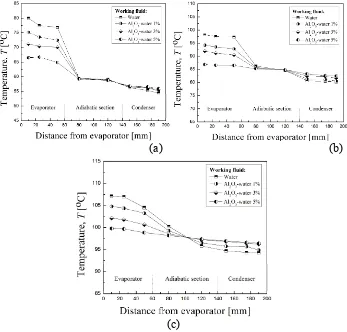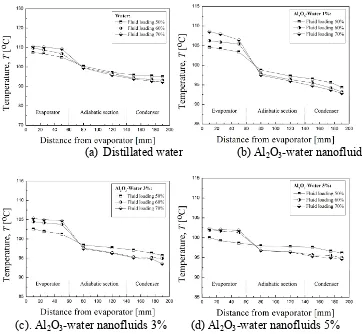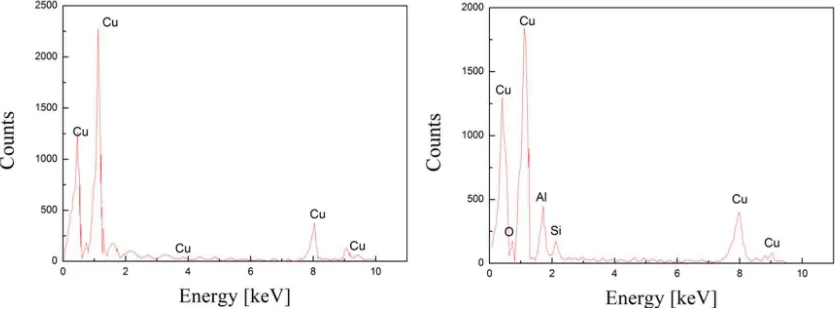Effect of Concentration and Loading Fluid of Nanofluids on the Thermal
Resistance of Sintered Powder Wick Heat Pipe
Nandy Putra, Wayan Nata Septiadi, Ridho Irwansyah
Heat Transfer LaboratoryDepartment of Mechanical Engineering, University of Indonesia
Kampus Baru UI, Depok 16424, Indonesia
Keywords: heat pipe, nanofluids, sintered powder wick.
Abstract.Heat pipes have been widely used as one of the alternative methods to absorb more heat in the cooling systems of electronic devices. One of the ways to improve the thermal performance of heat pipes is to change the fluid transport properties and flow features of working fluids using nanofluids. The purpose of this research was to investigate the effect of Al2O3-water nanofluids concentration and fluid loading to the thermal resistance between evaporator and adiabatic section of copper straight sintered copper powder wick heat pipe. In this research, sintered powder wick heat pipes were manufactured and tested to determine the thermal resistance of the sintered powder wick heat pipes which charged with water and Al2O3-water nanofluids. The concentrations of the nanoparticles were varied from 1 %, 3% and 5 % of the volume of the base fluid. The result shows that Al2O3-water nanofluids have the ability to reduce the temperature at the evaporator section and the thermal resistance of heat pipe. The increase in nanofluids concentration could give significant effect to reduce the thermal resistance of heat pipes. The amount of working fluid charged into the heat pipes also gives an effect in heat pipes thermal resistance, where the thermal resistance was lower when the heat pipe was charged with 60% of its volume. The formation of coating layer at sintered powder wick also can fixed the wick porosity and cause roughness on the surface of granular pore which the increased of capillary could give the effect for enhancement of heat pipe performance.
Introduction
Technological advances in micro processor unit (MPU) of a high performance computer which generate more heat than other electronic components. For several decades, the development of the MPU technology has faced problems with the cooling system that can absorb a high heat flux. Production of the Pentium generation of MPUs lasted from 1995 to 2002, and these MPUs could generate heat up to 30 Watts [1-3]. It has been projected that the next generation of computer chips will produce localized heat flux of over 10 MW/m2, with the total power exceeding 300 Watt [4].
Heat pipes could be an alternative method to solve the thermal management as it applying the passive cooling concept that can absorb more heat compared to other methods. Heat pipe is a heat transfer technology where pipe with wick and working fluid inside the pipe can transfer heat from the evaporator to the condenser section. The performance of heat pipes can be affected by several parameters, such as heat load, type of material, porosity and permeability of the wick, the type and amount of working fluid and the geometry of the heat pipe. Choi [5] has done the first investigation about nanofluids research using nano scale metal or metal-oxide particles which dispersed in a base fluid. J. Buongiorno et al [6] have studied the thermal conductivity of nanofluids. The studies were participated by 34 organizations from around the world. They compared thermal conductivity data obtained by different experimental approaches for identical sample of various nanofluids. The study found that the thermal conductivity enhancement of the nanofluids increase with increasing particles loading, particle aspect ratio and decreasing base fluid thermal conductivity. Das et al. [7] showed that effective thermal conductivity of nanofluids increased with elevated temperature. Jang [8] reviewed parameters that affected the thermal conductivity of nanofluids and showed that it was influenced by the volume fraction, the size of the nanoparticles and the temperature.
Advanced Materials Research Vol. 651 (2013) pp 728-735 Online available since 2013/Jan/25 at www.scientific.net
© (2013) Trans Tech Publications, Switzerland doi:10.4028/www.scientific.net/AMR.651.728
To increase the performance of heat pipes, nanofluids have been widely used as the working fluids [9-13]. Moreover Zhen et. al [9] studied the working fluid of heat pipe using CuO-water nanofluids and compared to the base fluid. The nanofluids was made from CuO nano particles which has an average particle diameter was 50 nm, in this research there was no surfactant added into the base fluid and it was made at 1% mass concentration. This research showed that the thermal performance of an oscillating heat pipe with Al2O3-water nanofluids, the result showed that the heat transfer performance of an oscillating heat pipe was apparently improved after the addition of alumina nanoparticles into the working fluid. Compared with the base fluid, the maximal reduction of thermal resistance was 0.14 °C/W (or 32.5%) which occurred at 70% filling ratio and 0.9% mass fraction when the power input was 58.8 W.
The objective of this research is to investigate the effect of Al2O3-water nanofluids concentration and fluid loading to the thermal resistance between evaporator and adiabatic section of copper straight sintered copper powder wick heat pipe.
Experimental setup and procedure
Preparation and characterization of nanofluids
In this investigation, aluminum oxide (Al2O3) nanoparticles were dispersed into a distilled water (H2O) base fluid. First, commercial nanoparticles were dispersed in the base fluid by using the ultrasonic processor at 100% intensity for 60 minutes to achieve a stable and homogeneous solution of nanofluids. A 100 ml of nanofluids was made at 5 different concentrations which were 1%, 2%, 3%, 4% and 5% respectively. To consider the effects of nanofluid volume fraction in this experiment, the concentrations by volume fraction of nanofluids were calculated with equation below [12]:
Fig. 1 Thermal conductivity of Al2O3-water nanofluids
The thermal conductivity of the nanofluids was measured at a constant temperature 25 0C by using the KD2 Decagon thermal analyzer. The KD2 thermal analyzer was often used to measure thermal conductivity of nanofluids by some researchers [14, 15]. The results of the thermal conductivity measurements were recorded as the thermal conductivity ratio of the nanofluid to the base fluid, knf / kbf . In this expression, knf and kbf are the thermal conductivities of the nanofluid and the base fluid, respectively. Fig. 1 showed the thermal conductivity of Al2O3 nanoparticles in distilled water with different volume fractions (1-5%) were measured, and it was shown that the thermal conductivities of Al2O3 in distilled water increased with the volume fraction of the particles. Comparison among measured thermal conductivity of the nanofluid with results from the references [7,10,15] showed little discrepancy.
Heat pipe construction
Heat pipes were fabricated from straight copper tubes with an outer, inner diameter, and length were 8 mm, 7.44 mm and 200 mm respectively. The wick of the heat a pipe was made from copper powder with particle diameter of 63µm and was sintered at temperatures of 950oC for 30 minutes. Figure 2 shows the Scanning Electron Microscope (SEM) image of the heat pipes wick. After sintering process, one edge of the pipe is welded and the other end was mounted with valve for charging the working fluid.
Fig. 2 SEM images of sintered copper wick
Experimental set-up
Each of straight the heat pipe with sintered powder wick was charged with several working fluid which was distilled water and Al2O3-water nanofluids at 50%, 60% and 70% of the total volume of heat pipes. The volume concentration of Al2O3-water nanofluids which were charged in heat pipe were 1%, 3% and 5%. The heat pipes were first evacuated by a vacuum pump and then charged with the working fluid. The mounted valve at the edge of heat pipe will be closed after the charging of the working fluid. The complete experimental setup was depicted in fig. 3. A flexible electrical heater was connected to a DC power supply and attached to the evaporator section of the heat pipe. The evaporator and the adiabatic sections were wrapped with glass wool and insulated using polyurethane to minimize the heat loss. The condenser area of the heat pipe was immersed horizontally into the cooling chamber. The water was used as the coolant, circulated through the cooling chamber to remove heat from the condenser section. The circulating thermostatic bath (CTB) was used to circulate the cooling water for the condenser and maintain temperature of cooling water at 25 °C. The surface temperatures of the heat pipes were measured using eight K-type thermocouples which has 0.05 0C accuracy. Three thermocouples were mounted to the evaporator, two were mounted to the adiabatic section and the rest were mounted to the condenser section. All K-type thermocouples have 0.05 mm in diameter and were connected to a high precision data acquisition system (NI 9211 by National Instrument). The thermocouple position was depicted in fig. 4. The experiments were performed at 3 heat load variations (Q) of 10, 15 and 20 Watt.
Fig. 3 Experimental setup [13]
Fig. 4 Thermocouple position
From the measurement of temperature distribution along the heat pipe, the total thermal resistance (R) between evaporator and adiabatic section can be calculated using the equation below:
(
Te Ta)
RQ −
= (2)
With the heating power input Q can be evaluated as follows:
Q=VI (3)
Results and Discussion
Figure 5 shows about temperature distributions the heat pipes which charged 60% of its volume with the distilled water and Al2O3-water nanofluids. As shown in Fig.5 (a-c), the temperatures at the evaporator section using water-based Al2O3 with 1.0, 3.0 and 5.0 % Vol were lower than those for using DI water, identical to the results obtained by other researchers [9,10,17,18].
From fig.5 it can be seen that the temperature of 5% Vol. was lower at evaporator section than those for 3 and 1 % Vol. of Al2O3-water nanofluids. These experiment results indicated that the nanofluids can give significant effect in temperature reduction at evaporator which was lower than the base fluid. With 10 Watt heat load, the heat pipe evaporator temperature were about 4.4oC, 7.6oC, and 12.3oC lower than the base fluid for the 1%, 3% and 5% volume fraction, respectively.
The temperature of evaporator of heat pipes were also measured with the variations of the charging ratio of heat pipes working fluids. The effect of charging ratio of the heat pipes were depicted in fig. 6 where the heat pipes were tested during a 20 W heat load. The lowest temperature in evaporator section can be found when 60% of the fluid was charged, with the changes of
temperature between the evaporator and condenser also the lowest. At the 50% of fluid charging ratio, the temperature changes between evaporator and condenser reached 5,7oC and it was decrease at 60% to 2,3oC. The change of temperature was increase to 6,9oC when the fluid charging ratio was 70%. This is also similar to the results with water and Al2O3-water 1% and 3% of working fluids.
(a) (b)
(c)
Fig. 5 Temperature distribution for water and nanofluids of fluid loading 60% on (a) 10 Watt, (b) 15 Watt and (c) 20 Watt
Figure.7 shows the thermal resistance of heat pipe from evaporator and adiabatic section. Heat pipe using of the Al2O3-water nanofluid provides a lower thermal resistance than the base fluid same charging ratio, these were similiar as indicated by Liu et.al [12], Do et.al [10], and Yang et.al [17], where the thermal resistance decreases either with water fluids or Al2O3-water nanofluid as working fluids when the heat load increase.
The fluid charging ratio also affected the heat pipe thermal resistance, where the smallest thermal resistance was found when the fluid charging ratio was 60%. The thermal resistance at 50% charging ration was still higher than 60% and it increased when fluid charging ratio at 70%. Using Al2O3-water 5% volume fraction as working fluid was significantly decreased the value of thermal resistance between the evaporator and adiabatic on the heat pipe about 0,052 at 60 % charging ratio, for 20 Watt heat load. Reduction in thermal resistance reached 14% compared with the distilled water as working fluid in the same condition. The thermal resistance increased at 70% fluid loading was in line with research by Jian Qu et al [11], but the lowest thermal resistance was apparently occurred at 50% fluid loading. This is allows the difference conditions because they used the Oscillating Heat Pipe (OHP).
Do et. al [10, 19] presented that the key effect of heat performance improvement of a heat pipe is not only on their thermophysical properties of nanofluids but the larger is the thin porous coating layer formed by the nanoparticles on the surface of nanofluids in heat pipe wick. Yang et.al [14] and Kim et.al [15] also presented that layer of nanoparticles will be increasing the roughness at surface of micro groove that it will increase the Critical Heat Flux. The formation of coating layer at
sintered powder wick also can fixed the wick porosity and cause roughness on the surface of granular pore which the increased of capillary could give the effect for enhancement of heat pipe performance.
(a) Distillated water (b) Al2O3-water nanofluids 1%
(c). Al2O3-water nanofluids 3% (d) Al2O3-water nanofluids 5%
Fig. 6 Comparison temperature distributions (a) distillated water and (b, c, d) Al2O3-water nanofluids, with fluid loading variations
Fig. 7 Thermal resistance of the heat pipe with water and Al2O3-water 5% nanofluids
Figure 8 shows the EDX from sintered powder wick after using Al2O3-water nanofluids. From the EDX can be seen that indeed there was a thin layer lining the surface of sintered powder wick in heat pipes where coming from using of nanofluid as the working fluid. Figure 8.a was the result of EDX testing of sintered powder wick before and after using Al2O3-water nano fluids. Al2O3-Water nano fluid charged in heat pipe had changed the surface of wick; where it can be seen cleary in the wick EDX test before and after experiment that using Al2O3-water nano fluid. From the Fig 8.b can
be seen that the elements of Al and O had coated the surface of the wick. The Al and O coating on the surface of the wick was only 8.73% and 5.46% respectively, which was not so significant. However, this was predicted as a other factor for enhancement of sintered wick heat pipe performance charge with nanofluid.
Fig. 8 EDX analysis of the screen mesh wick (a) before experiment and (b) after using Al2O3-water nanofluids
Conclusion
From the present study, it was found that Al2O3-water nanofluids can reduce the temperature at evaporator section compared to the base fluid. Concentration of Al2O3-water has an effect on the reduction of the evaporator temperature about 4.4oC, 7.6oC and 12.3oC for 1%, 3% and 5% volume fraction, respectively for a 10 Watt heat load. The combination of Al2O3–water nanofluids and sintered powder wick can reduce the thermal resistance of the heat pipe, so those can increase the heat transfer performance of heat pipe. The increased concentrations of nanofluid affected the reduction of the thermal resistance of heat pipe. Fluid charging ratio of heat pipes also gave effect in heat pipes thermal resistance where the thermal resistance was lower at 60% charging ratio.
Nomenclature
The authors would like to thank the DRPM University of Indonesia for funding this research.
References
[1] K.S Kim, M.H. Won, J.W. Kim, B.J. Back, Heat pipe cooling technology for desktop PC CPU. Applied Thermal Engineering 23(9) (2003) 1137-1144.
[2] M.E. Kabay, A Brief History of Computer Crime: An Introduction Of Student, School of Graduate Studies Norwich University, 2008.
[3] Ommi, Masaru, T. Fukumoto, State-of-the-art technologies of micro heat-pipe heat-sinks for notebook PCs thermal products Dept., (2000) Electronic Components Division and Components and Mounting Technology Development.
[4] H.B. Ma, C. Wilson, B. Borgmeyer, K. Park, Q. Yu, S.U.S. Choi, M. Tirumala, Effect of nanofluid on the heat transport capability in an oscillating heat pipe. Applied Physics Letters 88 (2006)143-116.
[5] Choi SUS. Enhancing thermal conductivity of fluids with nanoparticles. ASME fed 231 (995) 99-105.
[6] Jacopo Buongiorno, et al. A benchmark study on the thermal conductivity of nanofluids. Applied Physics 106 094312 (2009)
[7] S.K.Das, N. Putra, P. Thiesen, and W. Roetzel, Temperature dependence of thermal conductivity enhancement for nanofluids. Transactions of ASME, Journal of Heat Transfer 125 (2003) 567-574.
[8] S.P. Jang, Effect of various parameters on nanofluid thermal conductivity. Journal of Heat Transfer 129 (2007) 617-623.
[9] Zhen Hua Liu, QunZhi Zhu. Application of aqueous nanofluids in a horizontal mesh heat pipe. Journal of Energy Conversion and Management, 52 (2011) 292-300.
[10]Kyu Hyung Do, Hyo Jun Ha and Seok Pil Jang. Thermal Resistance of Screen Mesh Wick Heat Pipes Using the Water-based Al2O3nanofluids. International Journal of Heat and Mass Transfer, 53 (2010) 5888-5894.
[11]Jian Qu, Hui-yin Wu, Ping Cheng. Thermal performance of an oscillating heat pipe with Al2O3-water nanofluids. International Communications in Heat and Mass Transfer 37 (2010) 111-115.
[12]Z. Liu, and Q. Zhu, Application of Aqueous Nanofluids on Heat Pipe Thermal Efficiency, International Communication in Heat and Mass Transfer, 35. (2008) 1316-1319.
[13]N. Putra, W.N. Septiadi, H. Rahman, R. Irwansyah, Thermal performance of screen mesh wick heat pipes with nanofluids experimental, Thermal and Fluid Science 40 (2012) pp. 10-17.
[14]D. Wen, Y. Ding, Effective thermal conductivity of aqueous suspensions of carbon nanotubes (carbon nanotube nanofluids), Journal of Thermophysics and Heat Transfer 18 (4) (2004) 481– 485.
[15]H.A. Mintsa, G. Roy, C.T. Nguyen, D. Doucet, New temperature dependent thermal conductivity data for water-based nanofluids, International Journal of Thermal Sciences 48 (2) (2009) 363–371.
[16]J.-H. Lee, K.S. Hwang, S.P. Jang, B.H. Lee, J.H. Kim, S.U.S. Choi. Effective viscosities and thermal conductivities of aqueous nanofluids containing low volume concentrations of Al2O3 nanoparticles. Int. J. Heat Mass Transfer 53 (2010) 376-383.
[17]X. F Yang, Z. Liu, J. Zhao. Heat transfer performance of a horizontal micro grooved heat pipe using CuO nanofluid. J. Micromech. Microeng 18 (2008) 035038.
[18]H.D Kim, J. Kim, M.H Kim. Experimental studies on CHF characteristics of nano-fluids at pool boiling. Int. J. Multiph. Flow 33 (2007) 691-706.
[19]Kyu Hyung Do, Seok Pil Jang, Effect of nanofluids on the thermal performance of a flat micro heat pipe with a rectangular grooved wick, International Journal of Heat and Mass Transfer, Volume 53, Issues 9–10, (2010), 2183-2192.
Engineering Materials and Application
10.4028/www.scientific.net/AMR.651
Effect of Concentration and Loading Fluid of Nanofluids on the Thermal Resistance of Sintered Powder Wick Heat Pipe
10.4028/www.scientific.net/AMR.651.728
DOI References
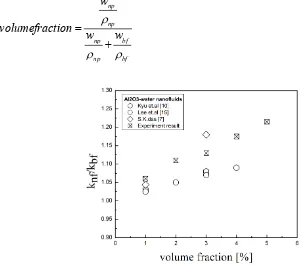
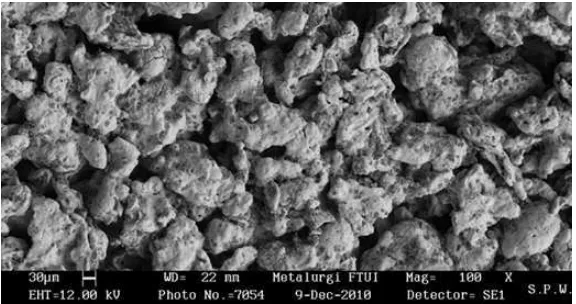
![Fig. 3 Experimental setup [13]](https://thumb-ap.123doks.com/thumbv2/123dok/635790.267987/9.595.124.491.69.438/fig-experimental-setup.webp)
